Migrate, Hibernate, or Tolerate: Nature’s Ultimate Winter Survival Guide
In our latest piece for Everyday Science, we learn about three main strategies that organisms use to tackle the biological challenges presented by the winter season.
Introduction
The constant state of chaos over the past few months has left me feeling overwhelmed and anxious. With science under threat, I feel hopeless and worried about the health and safety of our country and I worry about the future of science–something I love dearly. During dark times in my life, I have always looked to the natural world for guidance and inspiration. Taking a moment to consider the variety of organisms that live on our planet–how they live, solve problems, change and adapt, and how they experience the world–always puts my place in nature into perspective. So, if you, like me, have been feeling uninspired, anxious, and fearful because of the actions of and problems created by other humans, let’s consider the challenges that other organisms in nature face and how they manage to overcome those challenges using a seasonally (for a few more days, at least) relevant example: winter.
One of the most fascinating things about the biological world is its ability to generate many different solutions to the same problem, an ability especially apparent during the winter season. In the winter, the Earth’s 23 degree tilt is positioned away from that gleaming, life-giving ball of gas–the sun. This tilt lowers the amount of solar radiation that reaches Earth’s surface and creates significant differences in temperature between the equator and polar regions, which sets the stage for winter storms and cold fronts. We Homo sapiens, like the wise humans we think we are, solve the problem of colder, freezing temperatures by spending more time indoors, heating our homes, bundling up under blankets, donning hats, scarves, warm socks, and puffy jackets. But what about the critters that don’t have these human luxuries to keep them warm? How do they solve the winter problem?
In order to answer this question, it is useful to consider a few things. First, all biological organisms must regulate their body temperature. Too cold, and our cells are at risk of freezing and bursting. Too warm, and our enzymes–proteins that carry out chemical reactions–are at risk of denaturing, rendering them non-functional. As a result, organisms have evolved to maintain their body temperature within a set range and can be grouped into two main categories based on the mechanisms that they use to achieve this: endotherms and ectotherms. Endotherms–think birds and mammals–rely on heat generated from internal metabolic processes while ectotherms–think reptiles and amphibians–rely on the temperature of the external environment to regulate their body temperature. Regardless of what mechanism they use, both endotherms and ectotherms are faced with the challenge of surviving during a time when resources are scarce, temperatures are less than optimal, and metabolic demands are high. Faced with these challenges, organisms have come up with three main strategies to brave the winter: migration, hibernation, and tolerance.
The Migrators
First, let’s consider migration, a strategy whereby organisms move from one habitat to another in search of more favorable environmental conditions. Organisms migrate for a variety of reasons–in search of abundant food, mates, or ideal temperatures–and do so either by land, air, or water. While migration is already an impressive feat, there are a few migrators that stand out as especially impressive. First, we have the humpback whales, which migrate the farthest of any mammal on earth, with some whales reaching close to 10,000 miles roundtrip. These whales make the journey from the cold, nutrient-rich waters near the poles to the warm waters near the equator to breed and give birth. Next, we have the Arctic Tern, which undertakes the longest migration of any animal in the world, traveling from pole to pole in search of an endless summer and calmer waters. In its life span, it will travel the distance equivalent to three round trips to the moon. Finally, we have the monarch butterfly–the only known butterfly to make a two-way migration, traveling from regions as north as Canada to regions as south as Mexico. But that’s not even the impressive part. Starting at their overwintering spot and continuing the journey north is the first generation of monarchs. It will take them 3-4 generations to reach the northern United States and Canada, the progeny from one generation picking up where the previous generation left off.

So, how do these migrators know where to go? The Arctic Tern navigates primarily by following the sun. The blue whale relies on magnetic fields (the ability to sense magnetic fields is called magnetoreception), ocean currents, and temperature gradients. The monarch butterfly is thought to rely on a light-driven circadian clock and might also rely on magnetic fields for navigation. An interesting note on magnetoreception: while many organisms have the ability to sense magnetic fields, the cellular mechanisms governing this phenomenon have yet to be fully understood. However, the substance magnetite–a naturally magnetic iron oxide mineral–has been found to be integrated with sensory tissues in birds, turtles, and salamanders and is thought to play a role in transducing–or converting–magnetic field signals into neuronal signals. Other migrators rely on visual cues, like certain landmarks, and others on olfactory cues when migrating short distances.
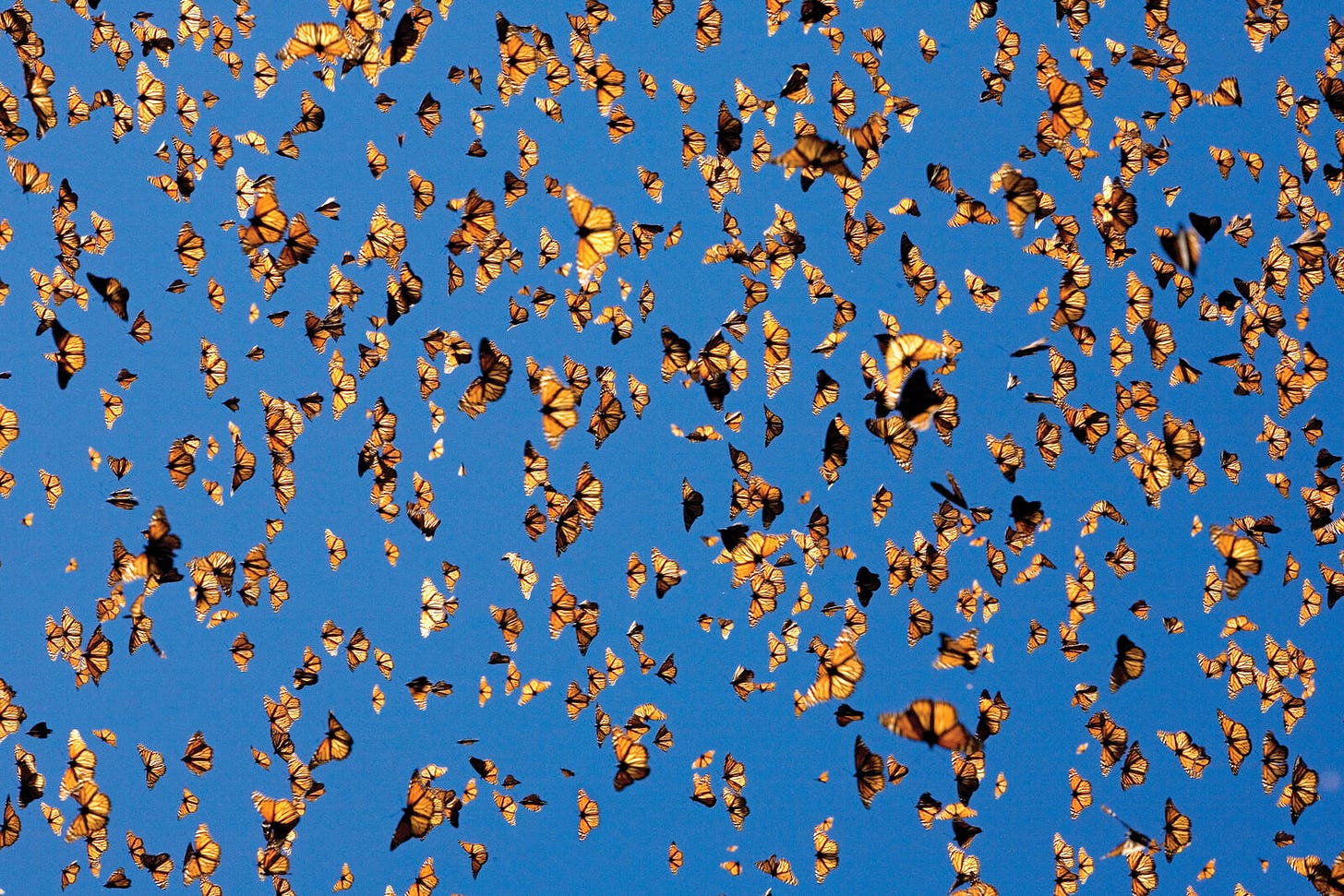
As you can imagine, traveling thousands of miles on these migratory journeys can be very energetically taxing, meaning that organisms have to prepare accordingly. Some opt for a stop-and-refuel approach, like our Arctic Tern, which plunge-dives into the ocean to snatch up fish (can we call it a dive-thru?), and our monarch butterfly, which feeds on nectar from a variety of flowers peppered throughout their migratory route. Others, like our blue whale, opt for a stock-up-on-fuel approach, feasting on up to 8,000 lbs of krill per day in the summer feeding months in preparation for winter migration. In organisms that opt for this stock-up-on-fuel method, fat is the superior storage macromolecule. This is because it has the highest energy-to-mass ratio compared to other macromolecules like proteins and carbohydrates–9 calories per gram versus 4 calories per gram, to be exact.
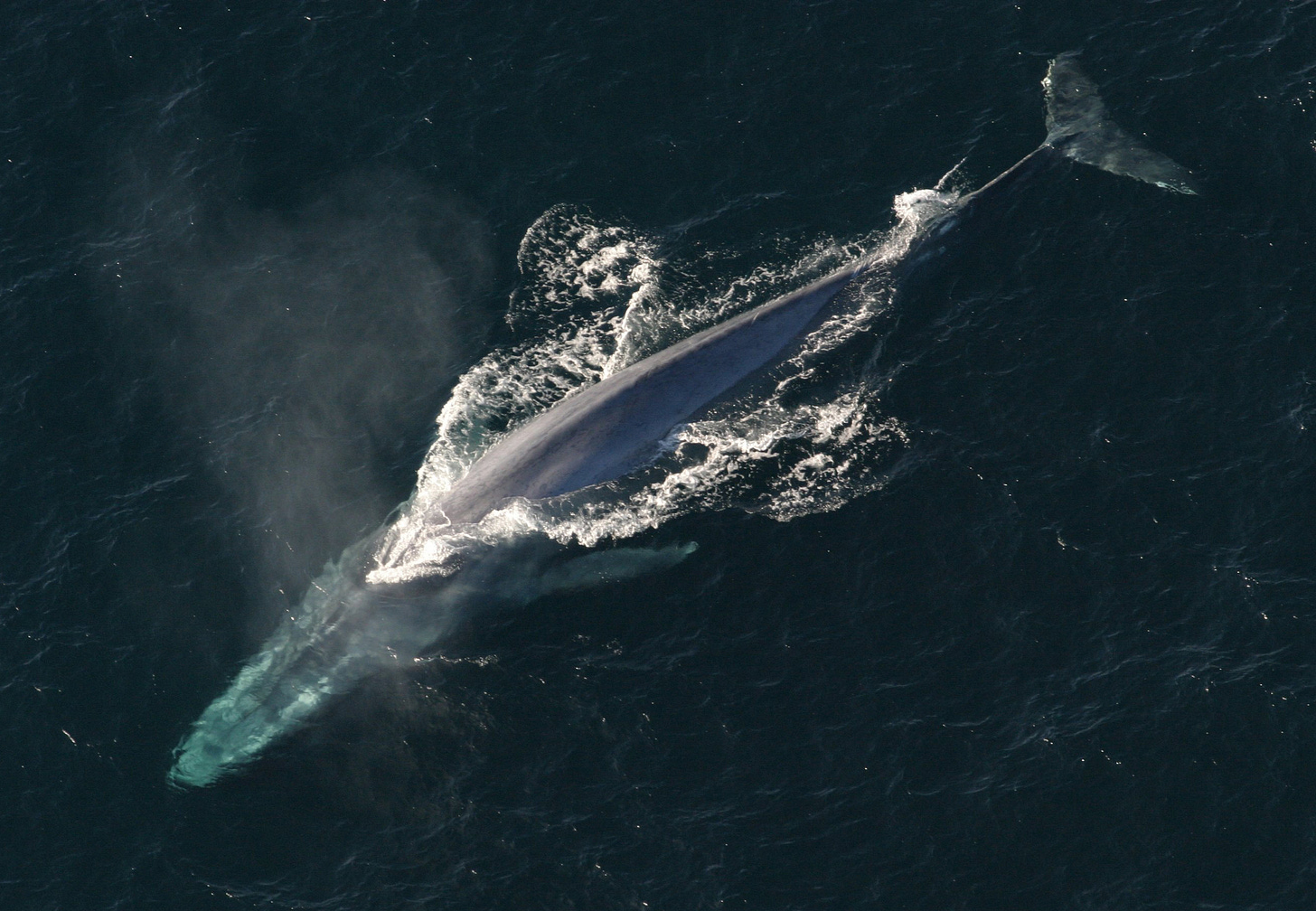
That’s all fine and good, but you may find that these mechanisms of energy storage and maintenance in our migrators seem fairly intuitive and not all that surprising. But, wait until you hear this–the Bar-tailed Godwits (a type of bird) can alter the size of their internal organs in preparation for their migration from Alaska to New Zealand, absorbing 25% of their digestive tissues while increasing the size of their chest and flight muscles. Because these birds don’t stop to feed along the way, it ends up being more energy efficient to divert biological resources from digestive organs to organs involved in flight. Talk about maximizing energy efficiency! Okay, so the migrators solve the winter problem by going elsewhere. But, what about everyone else?

The Hibernators
Other organisms solve the winter problem by hibernating. Before we get into what exactly hibernation is, it is useful to consider the problem that cold temperatures pose on our endothermic organisms. Recall that endotherms rely on internal metabolic processes to maintain their body temperatures within a set range. In cold weather, endotherms ramp up their metabolism to generate more heat, a process that requires a steady supply of energy. But, this increased demand for energy presents another problem: how can an organism get food during a period when it is scarce? To circumvent this, organisms have evolved to conserve energy by entering torpor, a state where their body temperature drops, and their heart rate and metabolism slow. Many organisms enter daily torpor–examples of which include hummingbirds, hamsters, some species of ground squirrel, and owls.
Hibernation differs from daily torpor in that it is a series of bouts of torpor that extend anywhere from a few days to a few weeks, depending on the species. Organisms prepare for hibernation by constructing their hibernacula–places of refuge like caves, clumps of vegetation, and burrows–where they will remain tucked away from predators and less subject to freezing temperatures. In preparation for long periods without foraging, some animals like chipmunks will store caches of food that they will feast upon during their long winter nap. Others, like marmots, bulk up during the warmer months, building up fat stores that will supply them with energy throughout their hibernation period.
Interestingly, little is known about the genetic mechanisms governing hibernation and torpor. The triggers are thought to vary widely; some organisms rely on circulating levels of ghrelin (the ‘hunger hormone’) and leptin (a hormone made by fat cells), both indicators of energy levels. Others rely on ambient temperature, circadian rhythms, resource availability, or a combination of these. Some examples of organisms that hibernate include: groundhogs, bats, lemurs, bumblebees, ground squirrels, hedgehogs and snails (yes, even snails). Only one species of bird is known to hibernate: the Common Poorwill. Impressively, during hibernation their body temperature drops from 100º to 41ºF and their oxygen consumption reduces by more than 90 percent! Speaking of changes in temperature, it is important to note that while this piece is focused on hibernation as an adaptation to help organisms deal with colder temperatures during winter, it is actually a strategy that can be used in any situation when resources are scarce–extreme heat, wildfires, and floods, for instance. Echidnas, small animals native to Australia that resemble hedgehogs with large snoots, will hibernate for multiple days after a recent wildfire until their food supply has rebounded. So if you, like me, commonly associate hibernation with winter, maybe it’s time to challenge our assumptions.

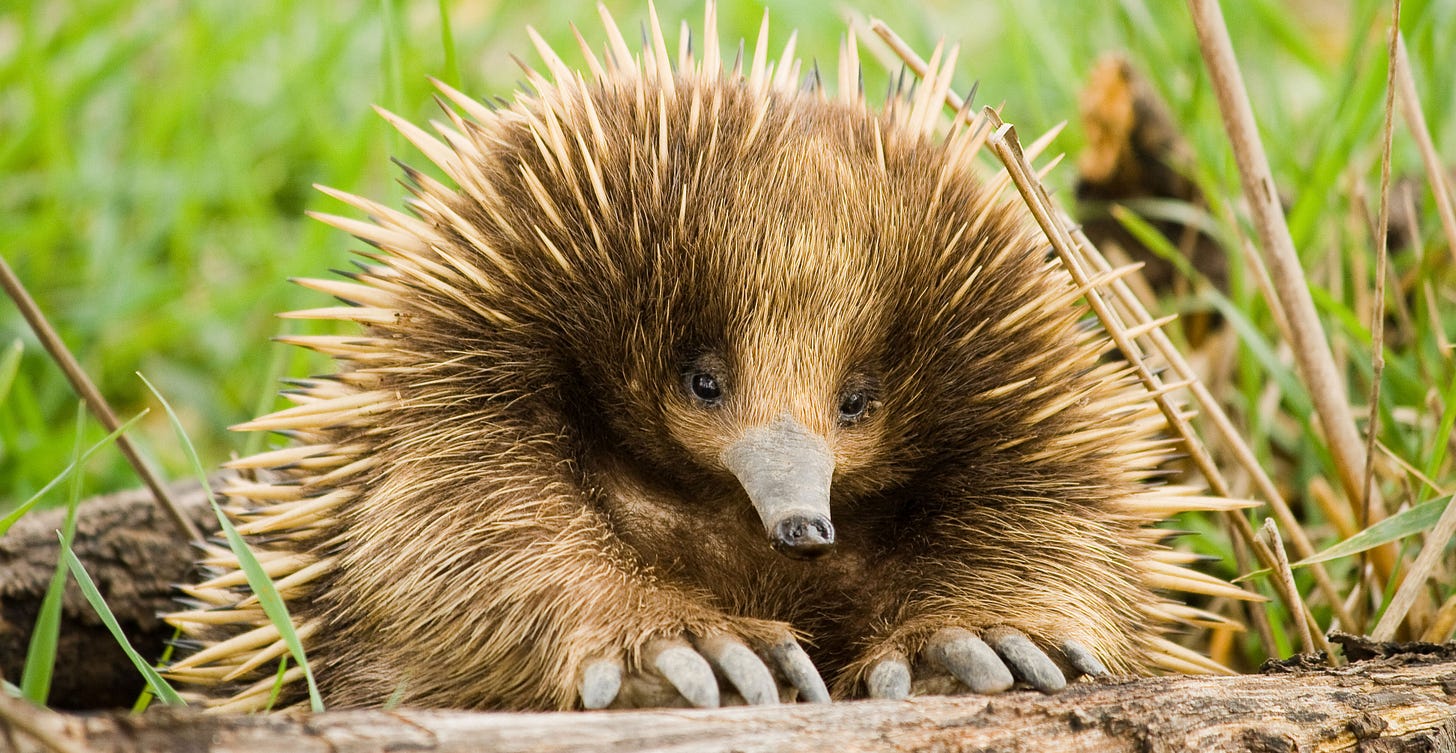
Now, if you look back to our list of hibernators, you will notice that I left out an obvious example. It’s likely the organism that you associate hibernation with the most. You fear them but love their tree back scratches and adorable ears: bears. Among hibernation experts, it is debated whether or not bears are true hibernators. Although metabolically similar, their body temperatures remain much higher–only dipping as low as 91.4ºF–than that of ‘typical’ hibernators whose body temperatures drop as low as 35.6º and 50ºF. Also, as I’m sure you know, bears are big, whereas most true hibernators are small. It would require massive amounts of energy to get a large animal’s body back to pre-hibernation temperatures–not a very efficient strategy. Because of these features, some experts believe that bears enter more of a deep sleep rather than true hibernation.
Whether you call it hibernation or not, though, the bears’ physiology during this dormant state is quite peculiar. Scientists have observed that despite being immoble for many months at a time, bears rarely get blood clots. A comparison between blood samples taken from bears during the summer and winter, suggests that bears have lower levels of HSP47–a clotting protein found on the surface of platelets–during hibernation (over 50 times less!). Clotting proteins are necessary for plugging up wounds and preventing excessive bleeding. Too much, however, and clotting can become fatal. Therefore, scientists reason that if we can understand the mechanisms by which these factors are controlled in bears, we can create therapies for people who are at risk for various clotting disorders. Research is currently underway in humans, mice, and pigs aimed at determining the relationship between immobility and HSP47 levels–so be on the lookout for new advances in clotting research. Thank you, bears!
So far, we’ve met critters that employ a range of strategies, from those that travel thousands of miles in pursuit of more favorable conditions to those that alter their metabolism in an effort to conserve energy. We’re now going to meet some organisms with, in my opinion, the coolest winter adaptations: the tolerators.
The Tolerators
Unlike our migrators and hibernators, who find a way to evade or bypass the winter, the tolerators meet the challenge head-on through unique physiological adaptations that allow them to thrive in cold environments. Let’s start off with the critter that inspired this entire piece: the wood frog. These little ectotherms spend the winter in suspended animation–in other words, completely frozen. No movement. No breathing. No heartbeat. As the frog’s abdomen starts to form ice crystals in response to freezing temperatures, its liver starts pumping out glucose that gets taken up by every cell. This sugary concoction prevents ice crystal formation and traps water molecules inside the cell, which prevent cell damage and dehydration, respectively. The frog is a solid block of ice with perfectly healthy cells trapped within, waiting patiently to be revived. And then, in the spring, it simply thaws from the inside out. Back to hopping around like it didn’t just do the coolest trick ever.

While that’s already impressive in and of itself, the mechanism underlying this behavior also has the potential to help people with diabetes. At two to ten times the normal level of blood sugar, human diabetics already begin to suffer damage to their cells. Wood frogs, on the other hand, can tolerate blood sugar levels one hundred times their normal level without any damage to their cells. Therefore, by understanding how their cells can withstand such elevated levels of blood sugar, we may be able to find solutions for individuals suffering from diabetes. Additionally, by characterizing the mechanisms these cells use to withstand freezing temperatures, we may be able to identify solutions to freeze and thaw transplant organs and tissues without introducing significant damage.
Another organism that uses an antifreeze strategy is the wooly bear caterpillar. These fuzzy little cylinders naturally produce a substance called glycerol, which prevents their inner cells from freezing while the rest of the fluid surrounding their tissues slowly becomes frozen, reaching temperatures as low as -90ºF. Their outer coat of fur–also known as setae–provides them with additional protection from the cold. Eventually, once thawed and matured, these fuzzy critters will transform into the dazzlingly beautiful Isabella Tiger Moth.
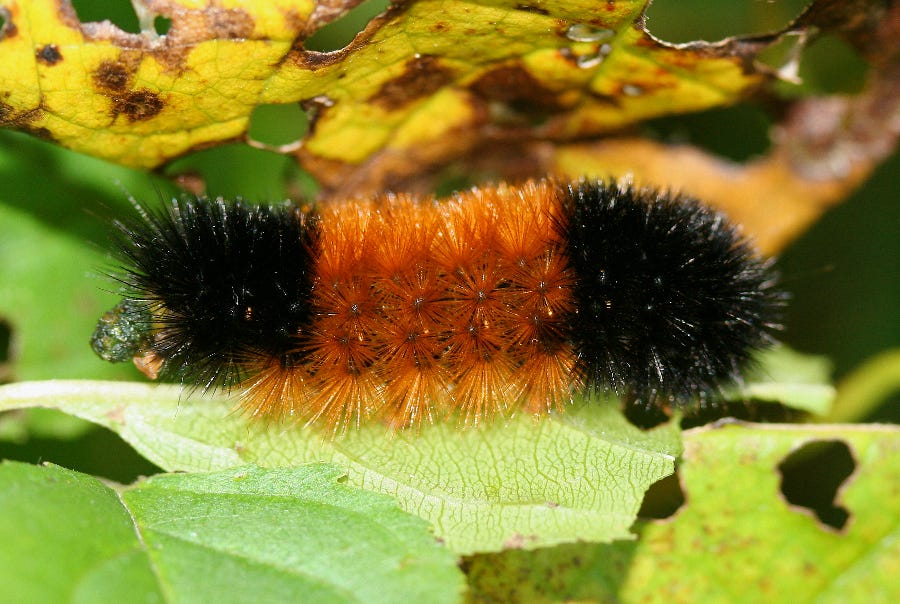
While the wooly bear and wood frog freeze, other ectotherms like the painted turtle can enter a state of dormancy called brumation (essentially, hibernation for ectotherms). The painted turtle survives the winter underwater. When the ponds freeze, they bury themselves in nearly 18 inches of mud beneath the pond's surface, where their metabolism slows and their demand for oxygen drastically decreases. Normally, in more favorable conditions, these turtles breathe air. But, once underwater for the winter they absorb oxygen through the skin of their cloaca–a highly vascularized area which allows for gas exchange–in a phenomenon called cloacal respiration. The cloaca is an anatomical structure where eggs and waste products are excreted. Colder temperatures result in a slower metabolism and thus a decreased demand for oxygen–a demand that cloacal respiration can usually keep up with.
When cloacal respiration isn’t enough to keep up with the demand for oxygen, however, they can switch their metabolism from relying predominantly on aerobic respiration to anaerobic respiration, a process that converts glucose into lactic acid to generate energy quickly. The only drawback to the switch: lactic acid build-up, which means muscle cramps for our painted turtles! You may think that antifreeze abilities and cloacal respiration are hard to beat, but have you considered the use of limb amputation? Snow flies, a type of flightless crane fly that thrives in the cold, have the ability to detach limbs that have been in contact with snow too long. Amputation prevents the propagation of ice crystals to the rest of the body, a situation that could result in death. Although many organisms can amputate their limbs as a predator-avoidance strategy, amputation in response to freezing temperatures might operate under a different mechanism, one that relies primarily on sensation by thermosensory neurons as opposed to mechanosensory neurons.
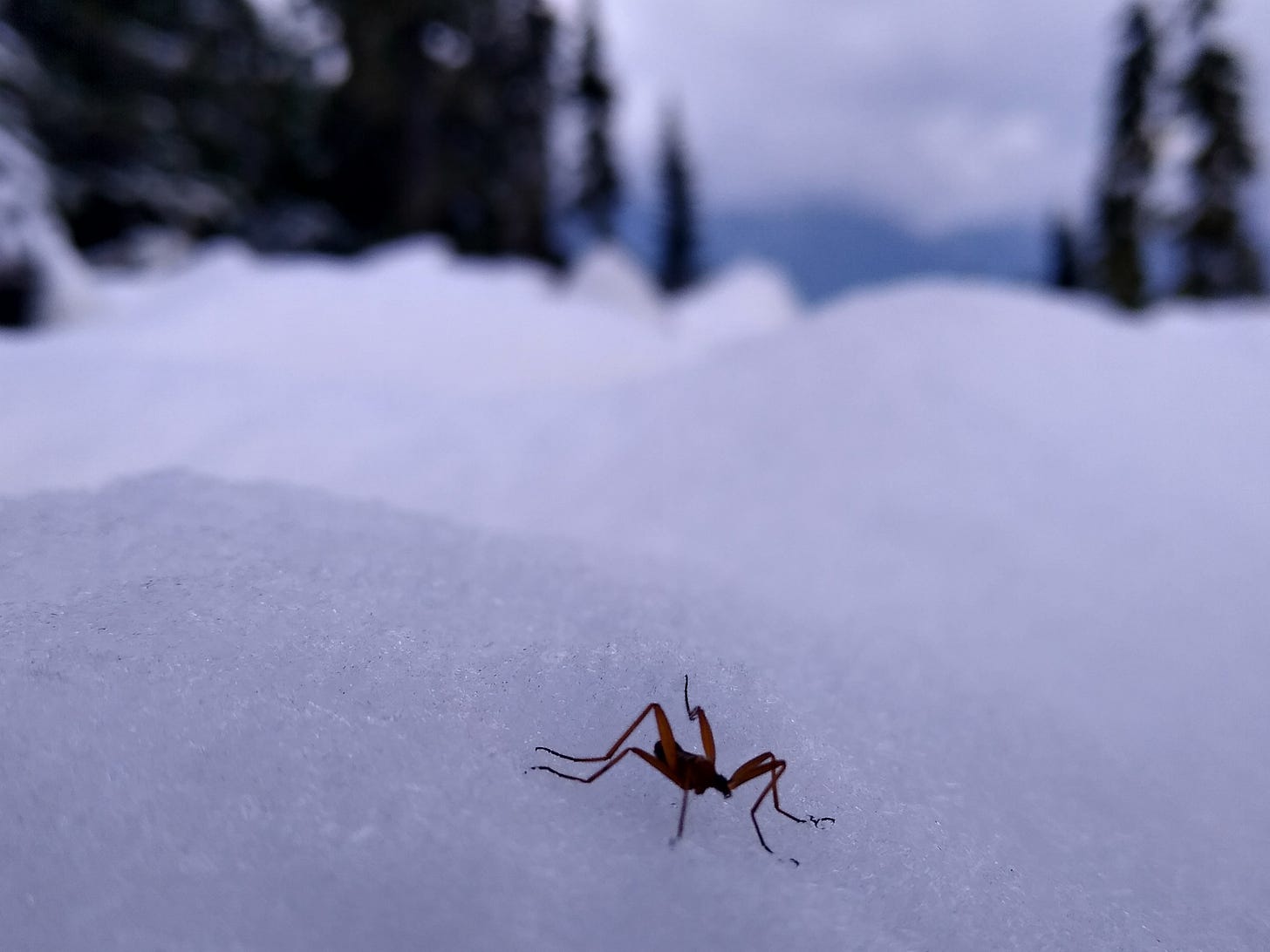
While some organisms lose the limbs that put them at risk, others can actually modulate certain body parts in response to the cold. Animals like shrews and moles can shrink their skulls in preparation for winter by about 10% in a process known as Dehnel’s phenomenon. All species observed to exhibit Dehnel’s phenomenon have high metabolic rates and do not hibernate. Recall that hibernation is a great way to conserve energy for small endotherms, but what if that is not an option? Another way to conserve energy is to reduce body size. Although this phenomenon has been observed by many naturalists and researchers, the mechanisms governing seasonal braincase and bone shrinkage are still unknown. While no doubt an interesting idea, this raises the question: why would evolution favor shrinking the skull and not some other, seemingly less important structure? Additionally, what might this mean for the cognitive abilities of these organisms? Clearly, there’s still so much we don’t understand about the natural world and there is much left to discover.
Conclusion
Whether solving the winter problem by migrating great distances, staying tucked away in hibernacula, or amputating frozen limbs, the natural world has a remarkable ability to find novel solutions to challenges and adapt to changing circumstances. As Homo sapiens, our very existence at this point in evolutionary history is evidence of our resilience as a species, of our ability to work together and overcome challenges. Though many of us Americans see this point in our history as a dark one, we must remember that we are products of nature–resilient, adaptable, and capable of finding solutions to any problem.



